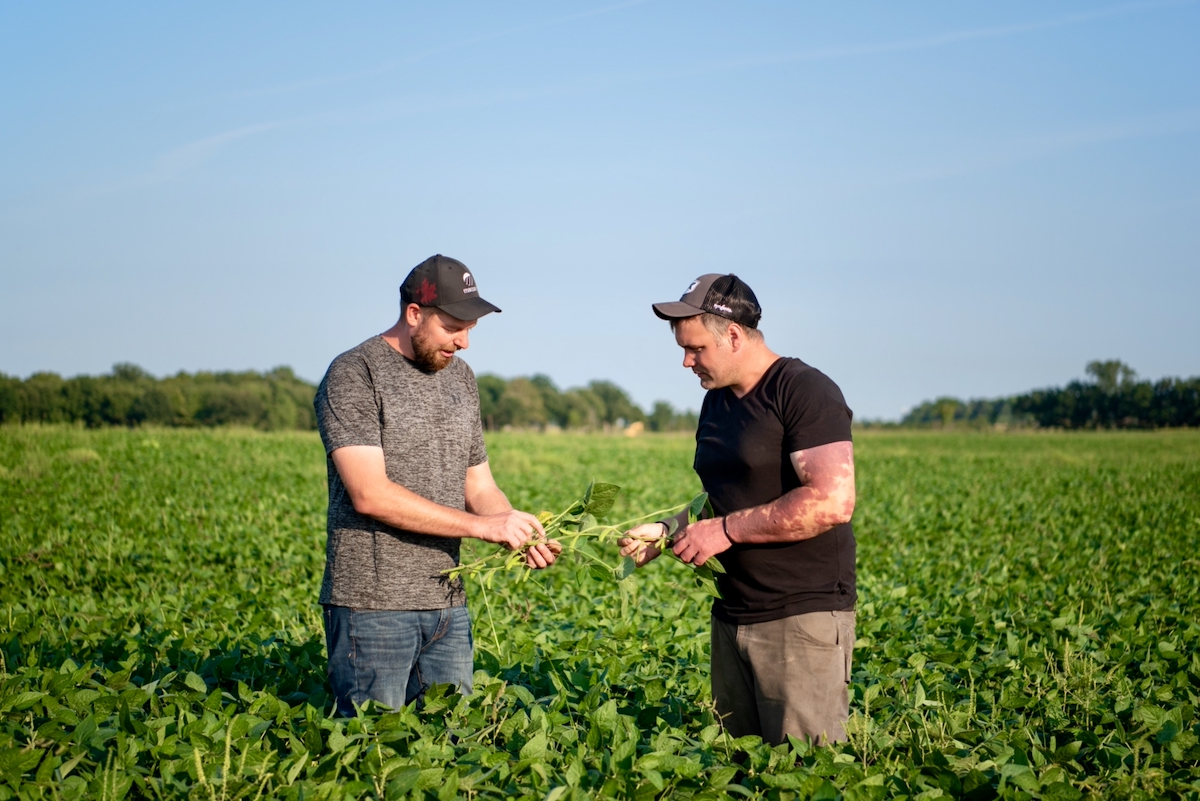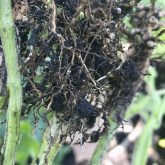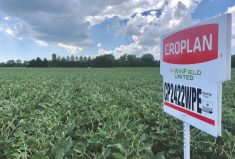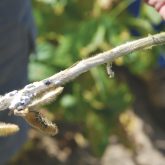In the realm of food production, most people are unaware of just how far agriculture has come. Consider how many plants used for food thousands of years ago are still being used today, but are virtually unrecognizable.
By the mid-1900s, selective breeding had become more scientific than ever, but it still required upwards of 15 years to develop a single variety. Today, with the use of molecular markers and other technologies, researchers and plant breeders have cut that timeline roughly in half.
Next, the field of genome editing has the potential to chop that lag time to one or two years, with the goal of improving hybrids and varieties and strengthening their resistance to any variety of stresses.
Read Also

Ontario farmers partner for success
Ontario business partners, Matt Bergman and DJ Wassenaar, have been farming together for 10 years. Their focus on integrating unconventional…
That’s the vision of the future for Dr. Jaswinder Singh, an associate professor in the department of plant science at McGill University. But it’s more than just improving the genetics of plants and animals for use by farm producers: he wants to increase food security and enhance environmental sustainability, not just in Canada, but around the world. And he wants to do all of that in partnership, i.e. with the science community, including the social sciences, as well as having consumers playing an active part in discussions.
Singh’s project is titled “Genome Editing and Food Security and Environmental Sustainability” and has received a grant worth $1.65 million from the federal government via the Natural Sciences and Engineering Research Council of Canada. It’s a six-year program that will work to develop plants and animals that can cope with expected changes in climate and provide a learning environment for the brightest minds in the field of genome editing.
“What we are doing is bringing back all of the natural coping structures that our plants can use to cope with environmental change so that in the future we don’t have any problems with food security,” says Singh. “In Canada, we grow a lot of wheat and corn. A small change in the temperature will create more diseases with effects on reproduction and hence yield, and if we can’t address those, we will be vulnerable in plant productivity.”

A similar goal is to help livestock and other animals cope with temperature variations that may occur.
This is a large component of the food security issue, especially with respect to the climate change scenario. Singh compares the wild varieties of plants that served humans for thousands of years to those that are grown here and around the world. Those plants in the wild were better able to cope with pressures like drought or diseases. By contrast, farmers today fertilize and protect their crops to the point where they’re almost dependent on human intervention.
Singh is using genome editing to try to unlock the secrets of the past and manipulate them to benefit growers in the future.
“At the same time, people are now very cautious, where they don’t want to use a lot of fertilizers just to grow those crops,” adds Singh. “We want to figure out the best ways to develop efficient crops that are also resilient. And we know that genomics can do that, and we’re thinking far ahead so that we can help our communities and grow food for future generations.”
Current regulatory climate not enough
Singh maintains that this genome editing project can also provide a new direction for scientific discovery in Canada. At this stage, he says, the regulatory agencies such as the Canadian Food Inspection Agency (CFIA) have difficulty in differentiating the crops that are developed through genomic editing and those that are naturally present in the environment.
“First of all, we want to develop efficient tools for them so we can differentiate those plants,” he says. “Secondly, we do not know how much we can regulate them right now. The U.S. has said they will not regulate them but in Canada, we have a different system which is based on plants with novel traits (PNT), so we assess these things case by case. That’s why we’re involving our students and scientists with those regulatory agencies, so we can collaborate and work together to develop the best policies, not only for Canada but for the whole world.”
Singh’s project parallels recent calls for improvements to Canada’s regulatory system, which is heavily reliant on a foundation that strictly follows PNT protocols.
Where this genome project differs is that it’s as much a training program for future scientists as it is a genome-editing venture. Singh wants to develop “the cream-of-the-cream” of researchers who understand the science and who grasp both the impact of the regulatory system and the need for environmental sustainability. He wants to avoid the mistakes in communication and awareness that were part of the development of early GMO crops.
Singh’s program also makes a concerted effort to recognize the specialized needs within certain crops and their specific regions. For instance, his lab works primarily on small grain cereals vital to Canada. He also has colleagues based in Calgary who are working with canola, and others at Queen’s University in Kingston working on potatoes.
Communications can’t be overlooked
For much of the past 10 to 15 years, agriculture has talked about the need for communications, particularly between farmers and consumers. The information gap between those who employ modern farming techniques and those who benefit has widened in that time and the distrust that has formed is threatening to further hamper efforts in scientific discovery. That’s why communication is another of the program’s pillars, and its importance cannot be overestimated.
“Sometimes we develop these buzzwords but we can’t disseminate those to the public,” says Singh. “This is part of our responsibility, especially in this project, with the path of communication and bringing those explanations to those people.”
He adds that workshops and welcoming those from outside of the research sphere will be integral parts of the communications component. Many people are familiar with genome editing terms like CRISPR but they don’t understand the difference between CRISPR and GMOs.
Bottom line
Perhaps the best part of genome editing is the time frame involved. In the 2000s, seed and trait companies revealed they were using tools such as molecular markers and double-haploid technology to cut the development time for new plant lines. In some ways, that efficiency created a level of impatience among farmers who’d grown accustomed to the rapid release of improved varieties.
Singh notes that the products from genome editing take less time to develop: in many cases, one to two years.
With a disease like fusarium head blight in wheat, it’s a matter of finding the gene that is susceptible to the pathogen and removing that defect by tweaking that gene to effectively deactivate the pathogen’s ability to “communicate” with the plant. Best of all, once a resistance gene or pathway is established, the chance of a disease developing resistance is very low while researchers will have a roadmap to use as a guide for further edits.
With the multi-purposed approach of this program, Singh also hopes to improve all aspects of the research and development pipeline, from initial editing of plants and animals to a better grasp of regulatory procedures to improved relations with consumers. They’re planning annual workshops complete with international exchange programs and a platform for meaningful discussions among stakeholders from around the world.
“We’re not only developing future generations of scientists but also the future generations of educators (training of trainers) who will light the future in years to come,” says Singh. “We’re also involving consumers and the general public and looking at the social aspects, as well.”
This article was originally published in the October 2019 issue of Soybean Guide.
















